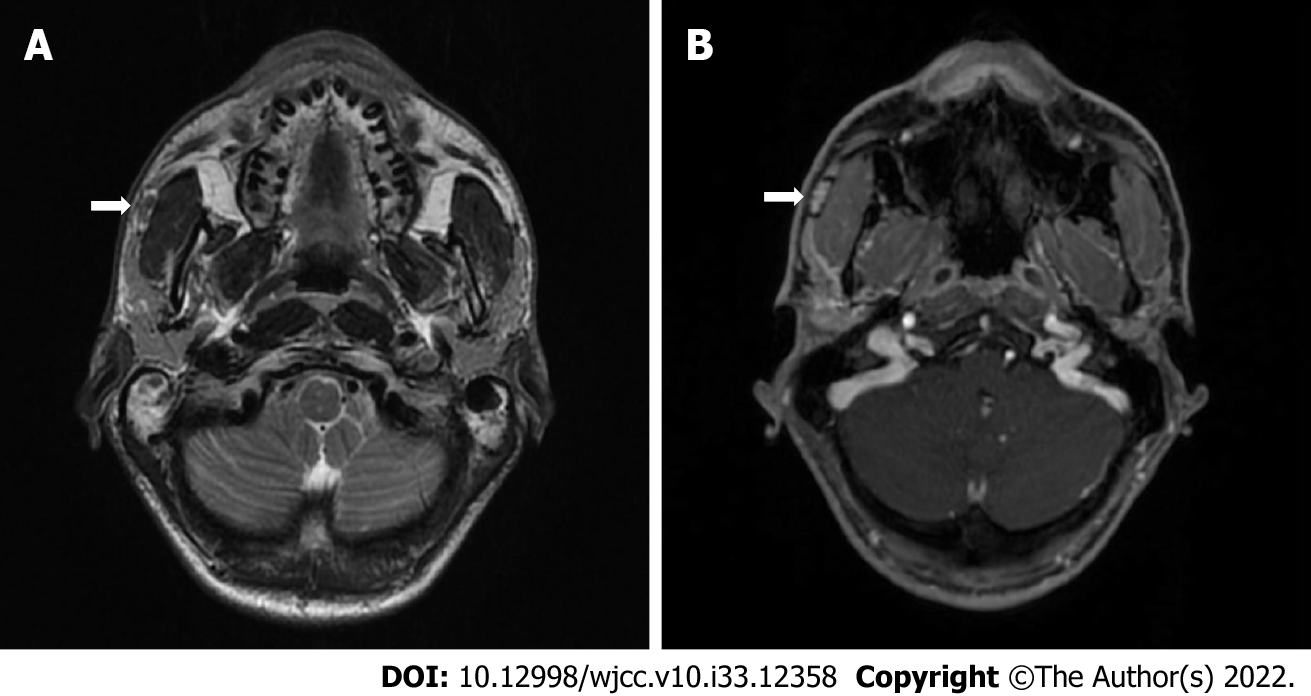Copyright
©The Author(s) 2022.
World J Clin Cases. Nov 26, 2022; 10(33): 12358-12364
Published online Nov 26, 2022. doi: 10.12998/wjcc.v10.i33.12358
Published online Nov 26, 2022. doi: 10.12998/wjcc.v10.i33.12358
Figure 1 Magnetic resonance imaging T2-weighted image (A) and T1-weighted contrast-enhanced image.
A: An arrow shows an encapsulated tumor in the anterior portion of the right superficial lobe of the parotid gland (accessory parotid gland) with high-intensity signal capsule together with low-intensity signal core; B: The same tumor with the contrast accumulating core and no clear contrast accumulation in the capsule.
Figure 2 Intraoperative approach and removal of the tumor.
A: Visualized tumor deep in the anterior part of parotid gland between two branches of the facial nerve (arrows); B: Surgical resection cavity over the surface of masseter muscle; C: Removed tumor after extracapsular dissection.
Figure 3 Pathological morphology of the tumor.
A: Beside of normal salivary gland (lobules on the left side of the picture) there was a nodule of the regular border, encapsulated by a thin layer of fibrous tissue. The lesion was composed of numerous small tubules surrounded by a large amount of adipose tissue; B: The tubules were surrounded by a collagenous membrane and consisted of two cell layers: cuboidal ductal and myoepithelial cells; C: There was evidence of fibrosis, periductal hyalinization and focal periductal chronic inflammation.
- Citation: Stankevicius D, Petroska D, Zaleckas L, Kutanovaite O. Hybrid intercalated duct lesion of the parotid: A case report. World J Clin Cases 2022; 10(33): 12358-12364
- URL: https://www.wjgnet.com/2307-8960/full/v10/i33/12358.htm
- DOI: https://dx.doi.org/10.12998/wjcc.v10.i33.12358











